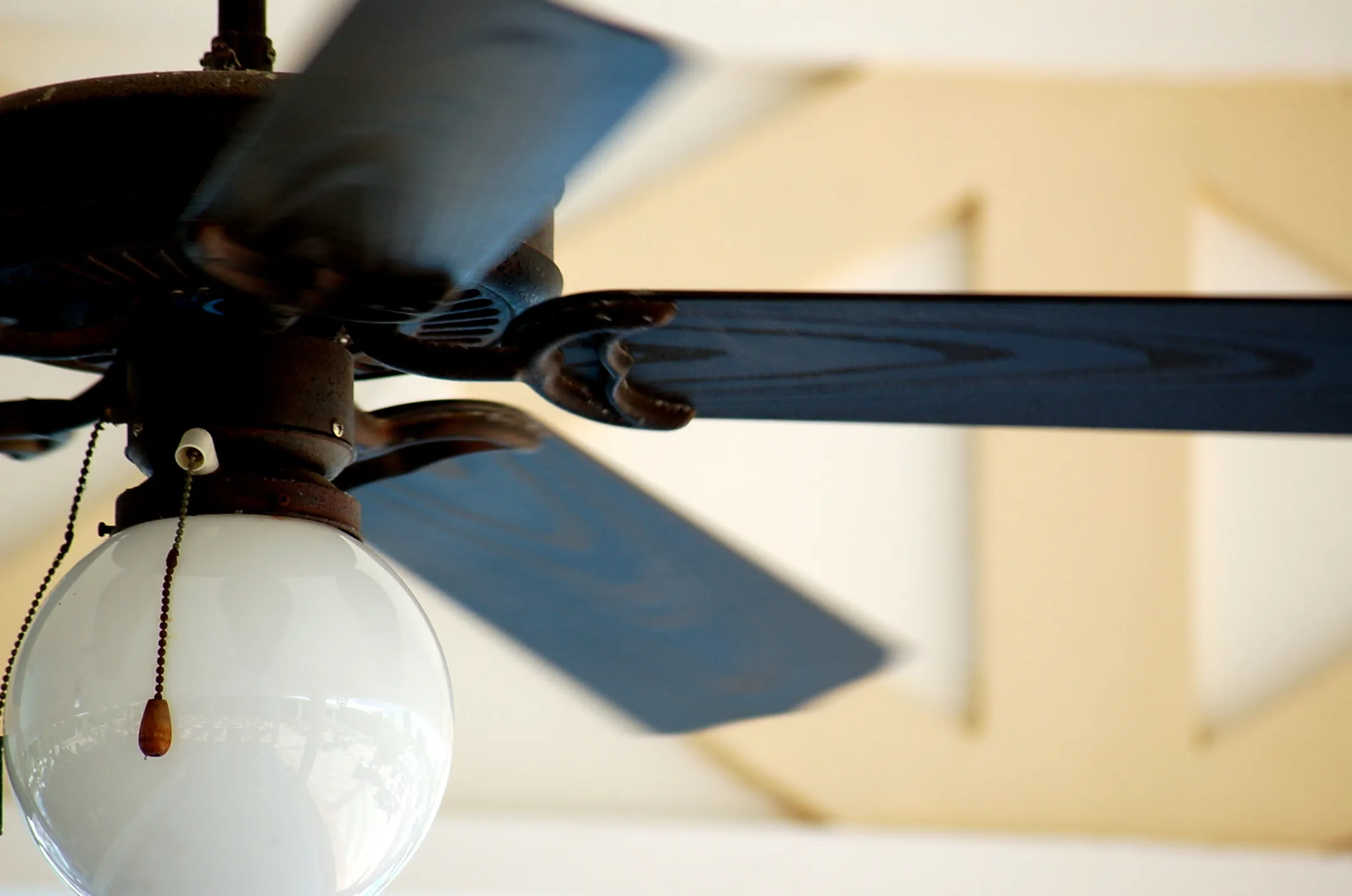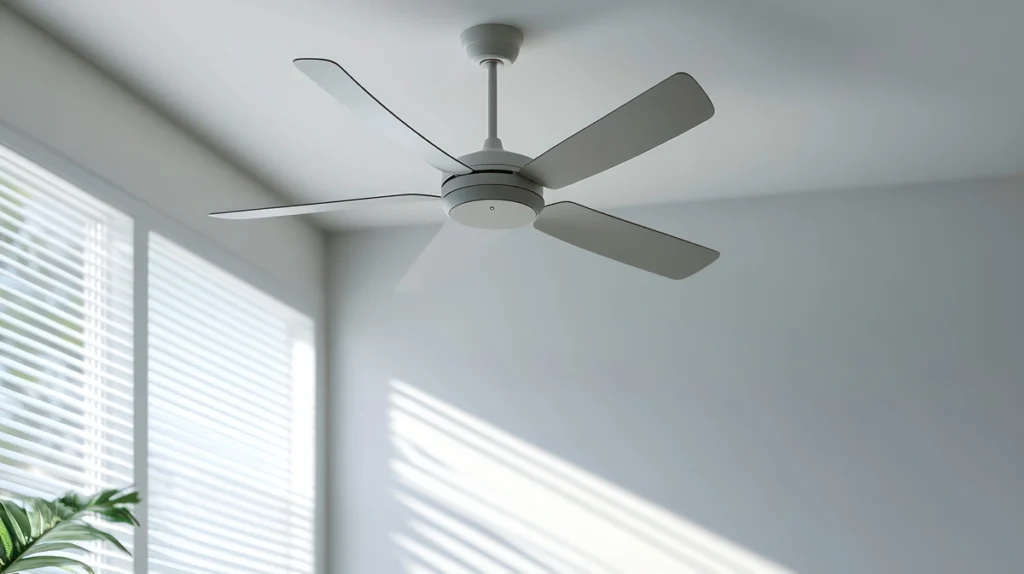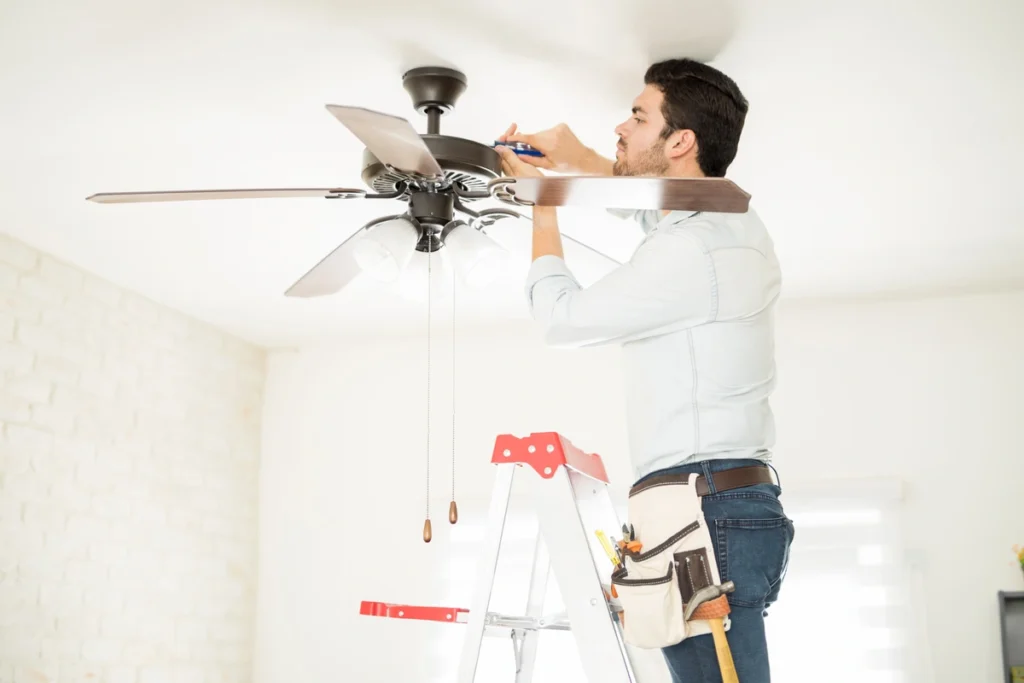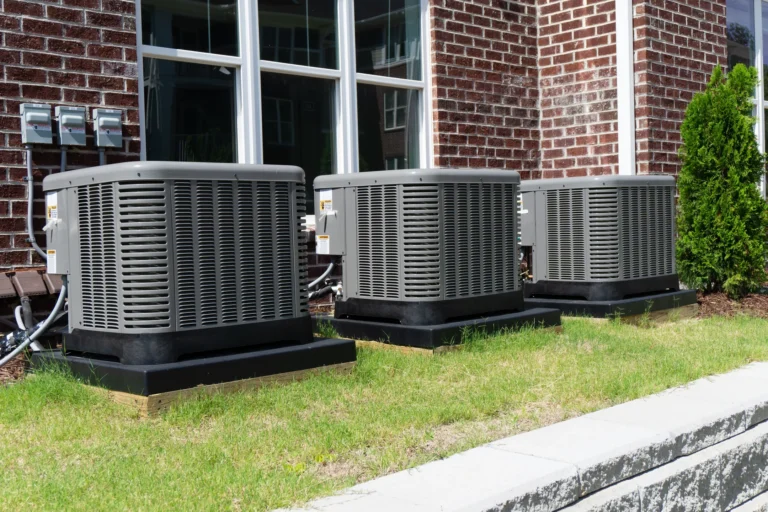
The Correct Ceiling Fan Direction For All Seasons
Ceiling fans are more than just a decorative fixture; they play a crucial role in maintaining indoor comfort and energy efficiency throughout the year. However, the effectiveness of a ceiling fan largely depends on its direction of rotation. Many homeowners are unaware that ceiling fans can be adjusted to rotate in different directions, each serving a distinct purpose depending on the season. In this comprehensive guide, we will talk about:
- Ceiling fan direction
- How to adjust it
- The benefits it offers during different seasons

Seasonal Fan Use
| Season | Direction | Speed | Primary Benefit |
|---|---|---|---|
| Summer | Counterclockwise | Medium–High | Creates a wind‑chill effect; supports AC efficiency |
| Winter | Clockwise | Low | Brings warm air down; enhances heating efficiency |
| Spring/Fall | Depends on day | Variable | Flexibility for changing temps |
Understanding Ceiling Fan Rotation In 3 Steps
Ceiling fans typically have two rotation settings: clockwise and counterclockwise. The blade direction you choose directly impacts the airflow pattern and overall comfort in your space. Adjusting the ceiling fan’s direction for the season is essential for optimizing both comfort and energy efficiency. Most ceiling fans are equipped with a switch on the motor housing that allows you to change the fan’s direction—be sure to set the fan’s direction appropriately for summer or winter.
- Counterclockwise (Forward) Rotation: This setting is used during the warmer months. When the fan blades rotate counterclockwise, they create a breeze that cools the room by evaporating sweat and promoting air circulation. Always check the ceiling fan turn and ensure the blade’s direction is set to counterclockwise for effective cooling.
- Clockwise (Reverse) Rotation: This setting is used during the colder months. When the fan blades rotate clockwise, they pull cool air up and push warm air down, helping to distribute heat more evenly throughout the room. Make sure the blade’s direction is set to clockwise to maximize heating efficiency.
☀️ 1. Summer – Embrace the Breeze with Counterclockwise Rotation

During the summer, the primary goal is to cool the room and make it more comfortable without relying too heavily on air conditioning. Setting your ceiling fan to rotate counterclockwise achieves this by creating a wind-chill effect.
Benefits of Counterclockwise Rotation in Summer
- Enhanced Comfort: The breeze created by the fan makes the room feel cooler, allowing you to set your thermostat a few degrees higher without sacrificing comfort. This can lead to significant energy savings.
- Energy Efficiency: By using your ceiling fan in conjunction with your air conditioner, you can reduce your cooling costs. The fan helps to circulate the cool air, making the entire room feel more comfortable.
- Improved Air Circulation: A counterclockwise rotation ensures that air is distributed evenly throughout the room, preventing hot spots and stagnant air.
- Optimal Performance in Summer Months: Setting your fan to the right ceiling fan direction—counterclockwise—is the right direction for the summer months to maximize cooling and energy efficiency.
How to Set Your Fan for Summer
- Locate the Direction Switch: Most ceiling fans have a small switch on the motor housing that changes the direction of the blades.
- Set to Counterclockwise: Flip the switch so that the blades rotate counterclockwise when you look up at the fan. You should feel a cool breeze when standing directly under the fan. For the summer months, make sure your fan is set to spin counterclockwise, which is the right direction for optimal cooling.
- Adjust the Speed: Set the fan to a higher speed for maximum cooling effect.
❄️ 2: Winter – Maximizing Warmth with Clockwise Rotation

In the winter, the objective shifts to maintaining warmth and improving heating efficiency. Switching your ceiling fan to rotate clockwise can make a significant difference in how warm your home feels.
Benefits of Clockwise Rotation in Winter
- Even Heat Distribution: Warm air naturally rises, collecting near the ceiling. A clockwise rotation pulls the cool air up and pushes the warm air down, ensuring a more even temperature distribution.
- Energy Savings: By helping to circulate warm air, ceiling fans can reduce the workload on your heating system. This can lead to lower heating bills.
- Increased Comfort: With better heat distribution, you can avoid the discomfort of cold spots and drafts in your home.
How to Set Your Fan for Winter
- Locate the Direction Switch: Find the switch on the motor housing that changes the direction of the blades.
- Set to Clockwise: Flip the switch so that the blades rotate clockwise when you look up at the fan. The fan should run at a low speed to avoid creating a cooling breeze.
- Adjust the Speed: Set the fan to a low speed to gently circulate the warm air without creating a draft.
🌷🍂 3. Transition Seasons – Spring and Fall
During the transition seasons of spring and fall, the weather can be unpredictable, with temperatures fluctuating between warm and cool. Ceiling fan usage during these seasons can be more flexible, depending on your specific comfort needs.
Spring
In the spring, as the weather begins to warm up, you can start using your ceiling fan in the counterclockwise direction to help cool your home. However, on cooler days, you might still need to use the fan in the clockwise direction to distribute heat.
Fall
In the fall, as temperatures start to drop, you can gradually transition to using your ceiling fan in the clockwise direction to help distribute heat. On warmer days, you might still benefit from using the fan in the counterclockwise direction.
Factors to Consider for Optimal Ceiling Fan Use
To maximize the benefits of your ceiling fan year-round, consider the following factors:
- Ceiling Height: In rooms with high ceilings, ceiling fans are particularly effective at distributing air. During the winter, you might need a longer downrod to ensure the fan is positioned correctly for optimal heat distribution.
- Room Size: The size of the room affects the fan’s efficiency. Larger rooms might require multiple fans or a fan with a larger blade span to ensure adequate air circulation.
- Fan Blade Angle: The angle of the fan blades can impact airflow. Most ceiling fans have blades angled between 12 to 15 degrees for optimal air movement. Angled blades help direct airflow, creating downdrafts in summer for cooling and updrafts in winter for heat distribution, which improves efficiency across seasons. The design and orientation of ceiling fan blades are crucial for maximizing comfort and energy savings.
- Speed Settings: Adjusting the speed of the fan according to the season and room temperature can enhance comfort and energy efficiency.
- Energy Efficiency: Choose ENERGY STAR-certified ceiling fans for better energy efficiency and cost savings, as these models consume less power while providing superior performance.
Installation & Safety Enhancements

Important Install Tip
- Ensure fan blades are at least 7 ft off the floor; use a fan-rated junction box when replacing a light fixture.
- Consider adding a downrod extender for high-ceiling rooms (available in 6″, 12″, 18″)—critical for optimal airflow and safety.
Additional Tips for Ceiling Fan Efficiency
To maximize the efficiency and longevity of your ceiling fan, ensure regular maintenance by keeping it clean and well-maintained, consider upgrading to smart controls for remote operation, and use it in tandem with your HVAC systems to enhance overall energy savings and indoor comfort.
- Regular Maintenance: Keep your ceiling fan clean and well-maintained to ensure it operates efficiently. Dust and debris can hinder the fan’s performance and reduce airflow.
- Smart Controls: Consider upgrading to a ceiling fan with smart controls, allowing you to adjust the fan’s direction and speed remotely or on a schedule.
- Complementary Use with HVAC Systems: Use your ceiling fan in conjunction with your heating and cooling systems to maximize energy savings and maintain a comfortable indoor environment.
MAINTAINING YOUR CEILING FAN FOR LONG-LASTING PERFORMANCE
Keeping your ceiling fan in top condition is essential for ensuring it delivers optimal air circulation and energy efficiency throughout every season. Regular maintenance not only extends the life of your ceiling fan but also helps you save energy and reduce utility bills, whether you’re using it to create a cooling breeze in the summer or to circulate warm air in the winter.
Start by routinely cleaning the fan blades and motor housing with a soft cloth or brush. Dust buildup on the blades can restrict airflow, forcing your fan to work harder and increasing energy consumption. Clean blades also help maintain better air circulation, which is key to keeping your space comfortable and your energy costs down. Don’t forget to check the fan’s direction switch to make sure it’s functioning properly this allows you to easily change the ceiling fan direction as the seasons shift, ensuring you’re always getting the right airflow for the time of year.
It’s also important to inspect your ceiling fan for balance and stability. Tighten any loose screws and make sure the fan is securely mounted, especially in rooms with high ceilings where air movement is crucial for both cooling and heating efficiency. A well-balanced fan runs more quietly and efficiently, preventing unnecessary wear and tear and helping you avoid higher energy costs.
For even greater convenience and energy savings, consider upgrading to a smart ceiling fan. These modern fans offer features like remote control, scheduling, and even automated direction changes, making it simple to adjust your fan’s direction and speed for the season—no need to climb up and flip a switch. Many smart ceiling fans also provide insights into your energy consumption, empowering you to make smarter choices about your thermostat setting and overall energy use.
By keeping your ceiling fan clean, balanced, and properly adjusted, you’ll enjoy better air circulation, lower energy consumption, and a more comfortable home year-round. Pairing your ceiling fan with your air conditioning unit or heating system can help you achieve even greater energy savings—allowing you to raise the thermostat in summer or lower it in winter without sacrificing comfort. With just a little regular maintenance and the right fan direction for each season, your ceiling fan can be a powerful ally in reducing cooling and heating costs while keeping your living space pleasant in every season.
We’re Your Cool and Comfort Experts
Understanding the correct ceiling fan direction for each season can significantly enhance your home’s comfort and energy efficiency. By setting your ceiling fan to rotate counterclockwise in the summer and clockwise in the winter, you can create a more comfortable living environment while reducing your energy bills. Call our team at Bob’s AC to ensure your home is cool and comfortable this season. Remember to adjust the fan speed and direction according to the season, room size, and ceiling height for optimal results. With these tips and considerations in mind, you can enjoy the benefits of your ceiling fan year round.
Ultimate Comfort Awaits


